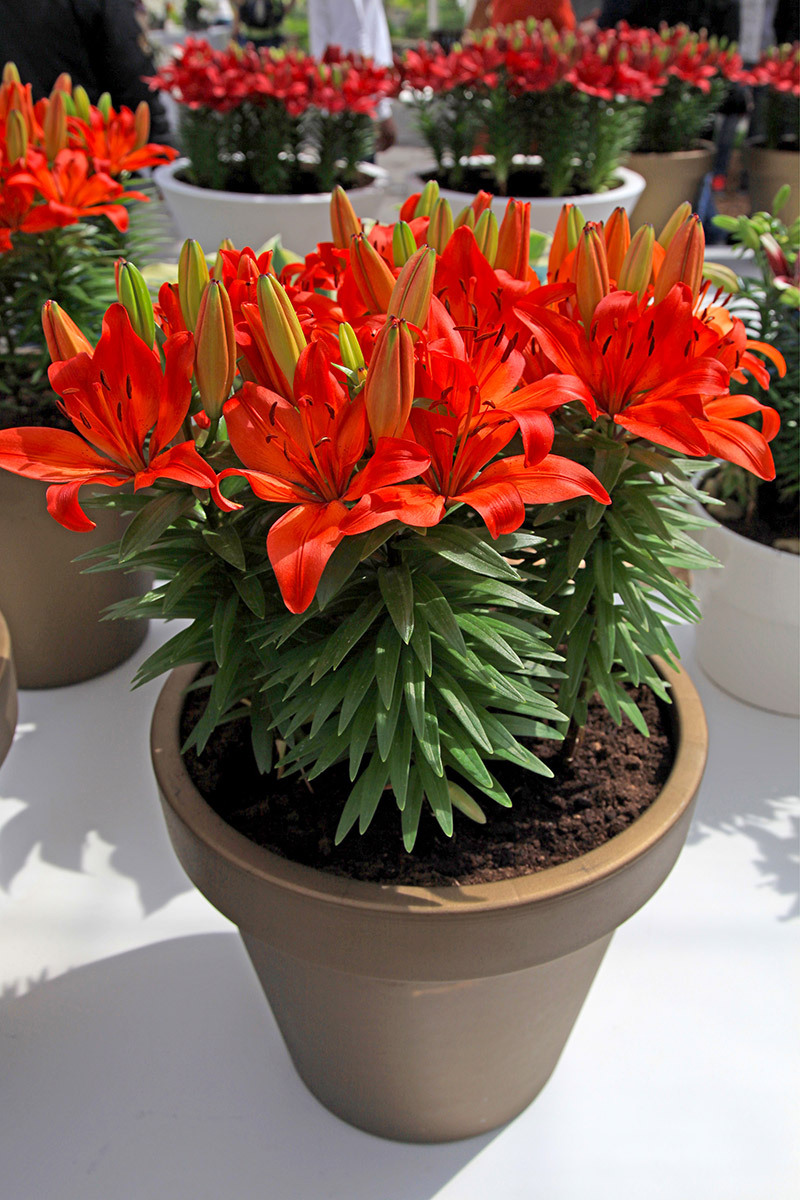Efficient Approaches to Maintaining Flower Freshness
Posted on 13/08/2025
Efficient Approaches to Maintaining Flower Freshness
Fresh flowers are cherished for their beauty and fragrance, but keeping them vibrant for as long as possible can be a challenge. Whether you're a florist, a hobbyist, or simply someone who loves to keep bouquets in your home, understanding the most efficient strategies for flower freshness is invaluable. This comprehensive guide explores proven ways to extend the life of your blooms, ensuring they stay fresh and vibrant for days or even weeks.

Understanding Flower Physiology: Why Do Flowers Wilt?
To better appreciate how to efficiently preserve flowers, it's essential to learn why they lose their freshness. Flowers, once cut, are separated from their root system. As a result, they no longer naturally absorb water and nutrients. This separation leads to dehydration and the accumulation of bacteria, both of which accelerate wilting. In addition, ethylene gas, which is produced naturally by flowers and some fruits, can hasten the aging process.
Key Factors Influencing Flower Longevity:
- Water uptake - Flowers need adequate moisture to retain firmness and color.
- Bacterial growth - Bacteria clog stems, limiting water intake.
- Temperature - Excessive heat or cold can stress flowers and lead to premature wilting.
- Ethylene exposure - Accelerates aging in cut flowers.
- Light conditions - Direct sunlight and artificial lighting may impact vase life.
Preparation: The Foundation for Long-Lasting Flowers
Before you even place your flowers in water, proper preparation is a critical step in maintaining flower freshness. Here's how to start your bouquet off right:
Choose Quality Flowers
- Select blooms that are just beginning to open. Fully opened flowers have a shorter shelf life.
- Inspect for damage - Avoid stems with bruised petals, leaves, or obvious signs of decay.
- Seek firm, upright stems - Weak stalks indicate dehydration or age.
Cut Stems Correctly
- Use sharp, clean scissors or a knife.
- Cut stems at a 45? angle. This increases surface area for water absorption and prevents the stem from resting flat on the vase bottom, restricting water uptake.
- Trim under running water when possible. This prevents air from entering the stem, which can create blockages.
- Re-cut stems every 2-3 days to maximize water absorption.
Water: The Lifeblood of Fresh Flowers
Fresh water is perhaps the single most important factor in the efficient preservation of cut flowers.
Tips for Optimal Flower Hydration
- Use room-temperature water. Extreme temperatures can shock or damage flowers.
- Change the water every other day to prevent bacterial build-up.
- Fill the vase with enough water to cover the lower halves of the stems.
- Remove foliage below the waterline; submerged leaves rot and contribute to bacterial growth.
Should You Use Filtered or Tap Water?
While most flowers will do well in tap water, some, such as roses, benefit from filtered water due to sensitivity to minerals and chemicals like chlorine. If possible, let tap water sit for a few hours before use, allowing chemicals to dissipate.
Nourishing Cut Flowers: Vase Life Extensions
The right nutrients can significantly extend the life of your blooms. Florists often rely on commercial flower food, but there are also effective homemade options.
Commercial Flower Preservatives
- Balanced nutrition - These packets typically contain sugar (for nourishment), an acidifier (lowers pH for easier absorption), and a biocide (controls bacteria and fungi).
- Easy to use - Just dissolve packet contents in vase water according to instructions.
Homemade Flower Food Recipes
- Lemon-Lime Soda Solution - Mix 1 part lemon-lime soda (not diet) with 3 parts water. Add a few drops of bleach to inhibit bacteria.
- Vinegar & Sugar Mix - Combine 2 tablespoons white vinegar and 2 tablespoons sugar per quart of water. Add a drop of household bleach for added antimicrobial effect.
- Aspirin Water - Crush an aspirin tablet and dissolve in the vase. Aspirin lowers pH and can improve water uptake.
Tip: Always clean your vase before use to prevent contamination.
Controlling Temperature and Humidity for Flower Freshness
Keeping your blooms at the ideal temperature is another highly efficient approach to preserving flower freshness.
Optimal Storage Conditions
- Keep flowers cool - Temperatures between 36?F and 46?F (2?C - 8?C) are ideal outside of display time. Think of how florists use refrigerated cases.
- Avoid placing flowers near heat sources like radiators, direct sunlight, appliances, or computers.
- Protect from cold drafts or freezing, which can damage delicate petals.
- Maintain moderate humidity to prevent petals from drying out.
At home, simply placing bouquets away from windows and in well-ventilated areas can prolong their vibrancy.
Specialized Techniques to Maintain and Revive Flower Freshness
Besides the basics, invest in specialized methods for efficient flower freshness maintenance.
Hydration Treatments
- Hydrating Overnight - After arriving home or after receiving flowers, let them rest in a cool, dark room overnight with freshly changed water.
- Soaking Stem Ends - For particularly wilted flowers, submerge stems (or whole bouquets, heads out) in a sink or bathtub of cool water for one hour to force rehydration.
The Boiling Water Trick
For woody-stemmed flowers such as roses and hydrangeas, briefly submerging the cut stems in boiling water for 10-20 seconds can unblock stem vessels clogged with air, restoring water flow. Be sure not to let the petals touch the water!
Removing Fading Blooms
- Deadhead early - Remove dying flowers promptly. Decaying blooms release ethylene gas, hastening the decline of the rest of the bouquet.
- Prune damaged leaves and petals to improve the overall appearance and health of the bouquet.
Maximizing Flower Freshness for Specific Varieties
Different types of flowers require customized care, so let's examine the best practices for some popular blooms:
- Roses: Recut stems daily. Use lukewarm water and avoid overcrowding in the vase. Remove outer "guard petals" for a cleaner look.
- Tulips: Prefer cool water. Wrap stems in paper and stand upright in water for a few hours before arranging for straighter stems.
- Hydrangeas: These thirstiest of flowers benefit from stem-end slitting or full submersion in water if wilting.
- Lilies: Remove pollen-laden stamens to prevent staining and extend petal life.
- Daffodils: Their sap can harm other flowers--display them alone for the first day before combining into mixed bouquets.
- Orchids: Thrive with filtered water and indirect light--avoid cold drafts.
Professional Tips for Extending Flower Freshness
- Always sanitize tools and containers before arranging to avoid introducing bacteria.
- Spray petals lightly with water using a fine mist sprayer to hydrate (but do not soak).
- Refrigerate arrangements overnight when possible for maximum freshness.
- Display flowers away from ripening fruit, which emits ethylene gas that speeds up decay.
- Rotate bouquets daily to ensure even light and temperature exposure.
The Importance of Flower Variety Selection
Selecting long-lasting flowers from the start is one of the most efficient approaches to keeping flowers fresh. Choose varieties renowned for their vase life, such as chrysanthemums, alstroemeria, carnations, and orchids. These will provide lasting pleasure with minimal extra care needed.
Common Myths Debunked: What Doesn't Work?
- Pennies in the vase: While copper can deter bacteria, modern coins contain little copper and offer minimal benefit.
- Sugar alone: Without an acidifier and biocide, sugar can promote bacterial growth.
- Refrigerating all flowers: Some tropical blooms like orchids and anthuriums are damaged by cold--store them at room temperature.
- Overcrowded vases: Limiting airflow and increasing bacterial spread causes faster wilting.

Flower Freshness: Sustainable and Eco-Friendly Practices
Modern efficient flower care also means employing sustainable methods. Here's how to keep your floral practices planet-friendly while maximizing bloom life:
- Compost faded flowers and used foliage instead of throwing them away.
- Reuse vases and containers and clean thoroughly between uses.
- Opt for locally grown or seasonal flowers that haven't endured long transit times.
- Reduce chemical use by using natural preservatives where possible.
Conclusion: Bringing It All Together for Lasting Flower Freshness
With a mix of modern science and traditional wisdom, efficient approaches to maintaining flower freshness are accessible to everyone. By focusing on preparation, hydration, nourishment, environmental control, and specialized care, you can vastly extend the beauty and life of your cut flowers. Remember, the key is to start off right with quality blooms, follow consistent care, and adjust your methods based on the flower type.
Whether you're brightening your home, preparing a special event, or sending a thoughtful gift, these effective techniques for keeping flowers fresh will ensure your arrangements remain stunning and vibrant for as long as possible. Now you have all the tools you need to enjoy breathtaking blooms day after day!
Latest Posts
Explore What Your Birth Flower Reveals About Your Characteristics
Efficient Approaches to Maintaining Flower Freshness
The Art and Science of Orchid Care





